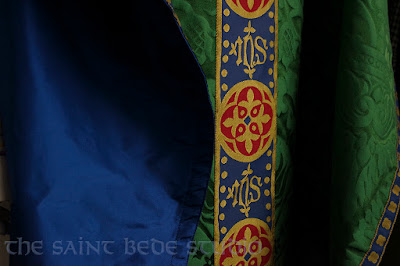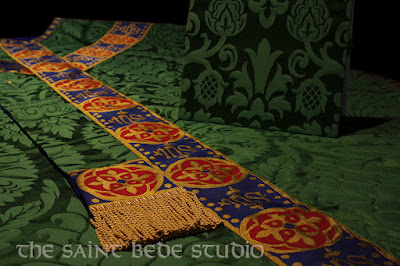At a previous Synod of Bishops, Pope Benedict and other bishops posed a question about the Kiss of Peace or
Pax in the celebration of the Ordinary Form of Mass according to the Roman Rite. Subsequently, the Congregation for Divine Worship and Discipline of the Sacraments issued a decision of admirable Roman liturgical conservatism, rejecting a proposal that the Pax be observed at the Offertory, rather than before the reception of Holy Communion (as it has been since the time of Pope Saint Gregory the Great).
In a previous post about the revision of the
Rites, we pondered if celebrants might consider that any ritual actions of the
Extraordinary Form could be incorporated into their celebration of the New Mass in such a way as would not disturb the Faithful. One of these, it might be suggested, is the
Pax.
The ritual actions for the Pax in the Extraordinary and Ordinary forms of the Roman Rite are quite different. The prayers - which are the same in both Old and New - are rearranged in the Ordinary form. One thing remains unchanged, however, and it is most significant.
Domine Jesu Christi, qui dixisti apostolis tuis ... This prayer, which is the preface to the Pax, is not addressed to God the Father (as all the other prayers of the Mass are)
(1) but addressed directly to God the Son, who is present upon the altar before the very eyes of the celebrant.
All the more inappropriate, therefore, for the celebrant to say or sing this prayer looking around at the Congregation (we need not elaborate on various manifestations of the
ars celebrandi of some priests).
(2) The celebrant ought to have his eyes cast down upon the altar, looking at Him whom he is addressing. This injunction, however, will not be found in the rubrics of the Pauline Missal.
 |
The Kissing of the Altar :
Karsh's photograph from the famous book by
Bishop Fulton Sheen : This is the Mass. |
There is a regrettable ritual excision from the Pax as observed in the Pauline Missal. In Solemn Masses, according to the Extraordinary form, the celebrant recites quietly the prayer
Domine Jesu Christi, qui dixisti apostolis tuis and then
he
kisses the corporal upon which rest the Sacred Host and the Chalice. The deacon (standing at his right), kisses the altar, but not the corporal. The celebrant then gives the Pax to the deacon. In some Mediaeval Western liturgies, the celebrant kissed not the corporal, but the Sacred Host itself, or the foot of the Chalice. These ritual gestures are of great significance and underline that the Pax is
not a greeting per se, but a ritual transmission of the Peace which comes directly from our Saviour.
Would it be so objectionable if celebrants of Mass in the Ordinary Form were once again to kiss the corporal before giving the Faithful the Greeting of Peace? Would that ritual action not emphasise their words :
The Peace of the Lord be with you always ? Would this be so objectionable? For some, probably. Others might not even notice. Still others might welcome the enrichment of an other-worldly ritual dimension in the
Ordinary Form of the Mass. Prudence in all things.
_______________________________________________
(1) With the exception of the Kyrie eleison, which is a litany.
(2) We had the misfortune to observe during the ANZAC Dawn Service at the Gallipoli Beach in Turkey on 25th April 2015, the Anglican minister "praying" the Lord's Prayer whilst looking from side to side to those gathered (whom he would have been unable to see because of the glare of lights). This is is the antithesis of Liturgical Prayer.


















